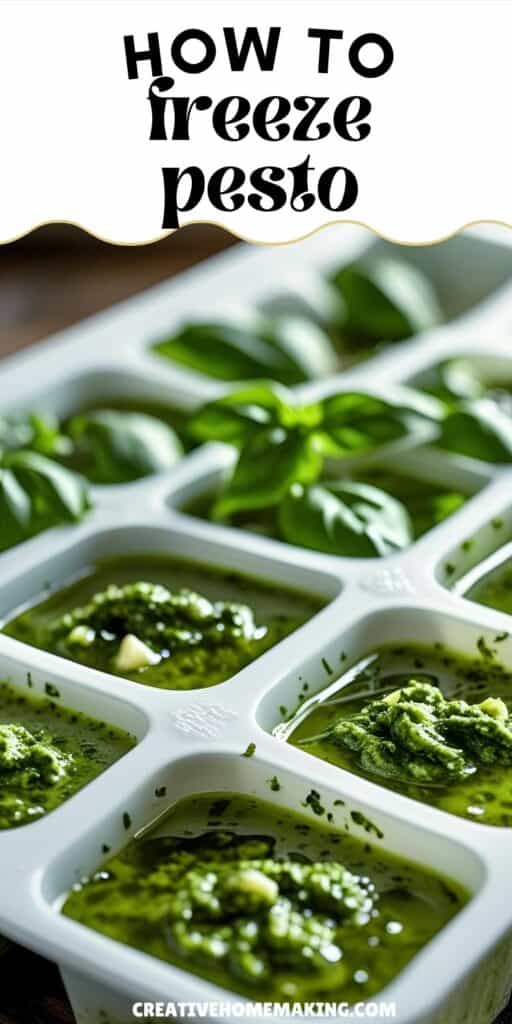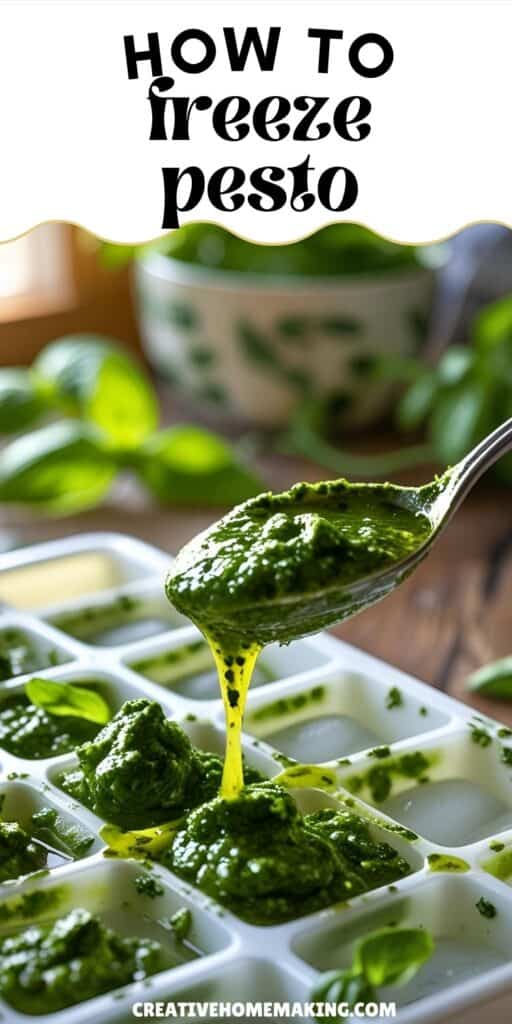If you love fresh pesto but hate when it goes bad too quickly, freezing is a smart option. Freezing pesto is an easy way to keep its bright, fresh flavor so you can enjoy it anytime you want. Whether you have a big batch or just a little bit, freezing helps you save it for later without losing its taste.
This post may contain affiliate links.
You can freeze pesto in small portions like ice cube trays or in larger containers, depending on how you plan to use it. This simple step lets you have homemade pesto ready for pasta, sandwiches, or even as a quick sauce for dinner nights.
In this post, you’ll find easy tips to freeze your pesto the right way. You’ll also learn how to keep its color and flavor fresh after thawing, so every meal feels just as good as when you first made it.
Related Article: Creamy Zucchini Pesto Dip – Perfect Appetizer for Summer

Best Methods for Freezing Pesto
To keep your pesto fresh and easy to use, you’ll want to freeze it in ways that help with portion control and taste. You can freeze small amounts for quick use or store larger batches to save space. Using the right method makes thawing and cooking faster and avoids waste.
Freezing Pesto in Ice Cube Trays
Freezing pesto in ice cube trays is one of the easiest ways to portion it out. Spoon your fresh pesto into each cube slot, then cover or freeze uncovered until solid.
Once frozen, pop the cubes out and place them in a sealed freezer bag. This stops freezer burn and makes it easy to grab just what you need.
Each cube usually holds about 1 to 2 tablespoons of pesto. This size works well for adding to sauces, soups, or small dishes without thawing too much.
Related Article: The Best Creamy Pistachio Pesto Recipe – Easy & Delicious!
Storing Pesto in Containers
If you want bigger portions, use airtight containers. Spoon pesto in, leaving some space at the top since it will expand slightly when freezing.
Cover the top with a thin layer of olive oil before sealing. This layer helps protect the pesto from air and keeps it fresh longer.
You can freeze the containers as they are or divide them into smaller sections after they are frozen solid. Just be sure to use freezer-safe containers to avoid cracking.
Related Article: Creamy Walnut Pesto with Fresh Basil

Vacuum Sealing Pesto for Freshness
Vacuum sealing is a great way to keep pesto fresh if you freeze larger amounts. This method removes most of the air, which reduces freezer burn and extends shelf life.
Pour pesto into a bag, seal it with a vacuum sealer, and then freeze. You can also freeze vacuum-sealed pesto flat to save space.
When ready to use, just thaw the bag in the fridge. Vacuum sealing works best if you plan to store your pesto for several months.
Tips for Preserving Flavor and Texture
To keep your pesto tasting fresh and looking good, you need to take some simple steps before freezing. How you prepare, store, and thaw pesto makes a big difference in keeping its flavor and texture intact.
Related Article: How to Make Creamy Broccoli Pesto – Quick & Flavorful
Adding Oil to Prevent Browning
Before freezing, mix a little extra olive oil into your pesto. The oil forms a protective layer that slows down oxidation, which causes browning and flavor loss. Spread a thin layer of olive oil on top if you’ve already put pesto in a container to seal it from air.
Using high-quality olive oil helps preserve the sauce’s fresh taste. Avoid freezing pesto without oil since it can turn dull and lose aroma faster. This step keeps the bright green color and rich basil flavor longer.
Portioning for Easy Use
Freeze pesto in small amounts so you only thaw what you need. Using ice cube trays works well; each cube is about one to two tablespoons, perfect for adding to dishes like pasta or soup.
Once frozen, pop the cubes into freezer bags to save space and protect from freezer burn. Label the bags with the date so you can keep track. Portioning this way helps you avoid defrosting too much and wasting pesto.
Thawing and Using Frozen Pesto
To thaw, move the needed portion to the fridge overnight or use it straight from frozen in hot dishes. Avoid refreezing pesto as repeated freezing and thawing can separate oils and make the cheese grainy.
If you notice oil separation after thawing, just stir it back in gently. Use thawed pesto quickly, as it won’t last long once defrosted. Adding it to warm pasta or toast straight from frozen works great and keeps texture intact.
Follow my Pesto recipes board on Pinterest.




